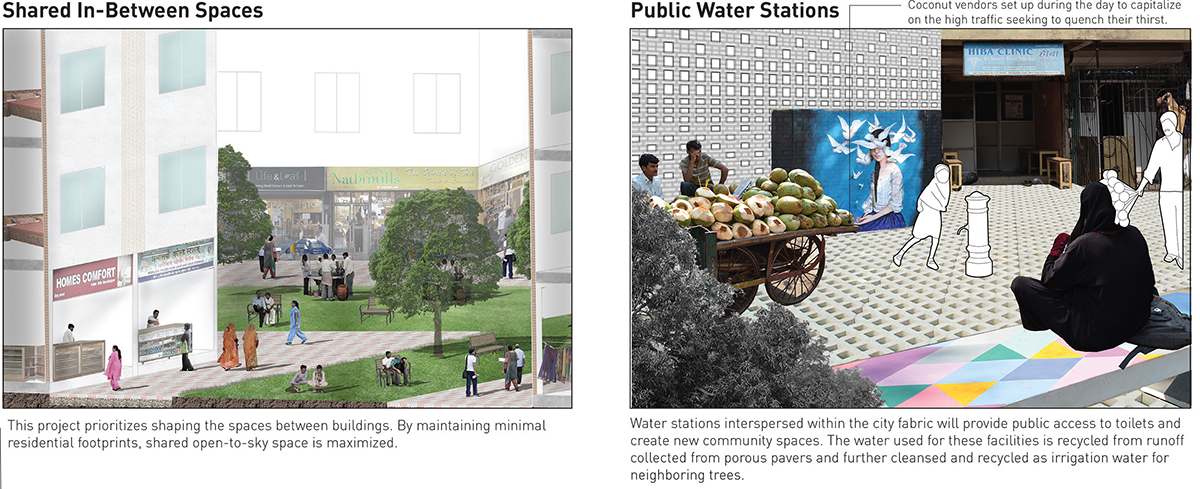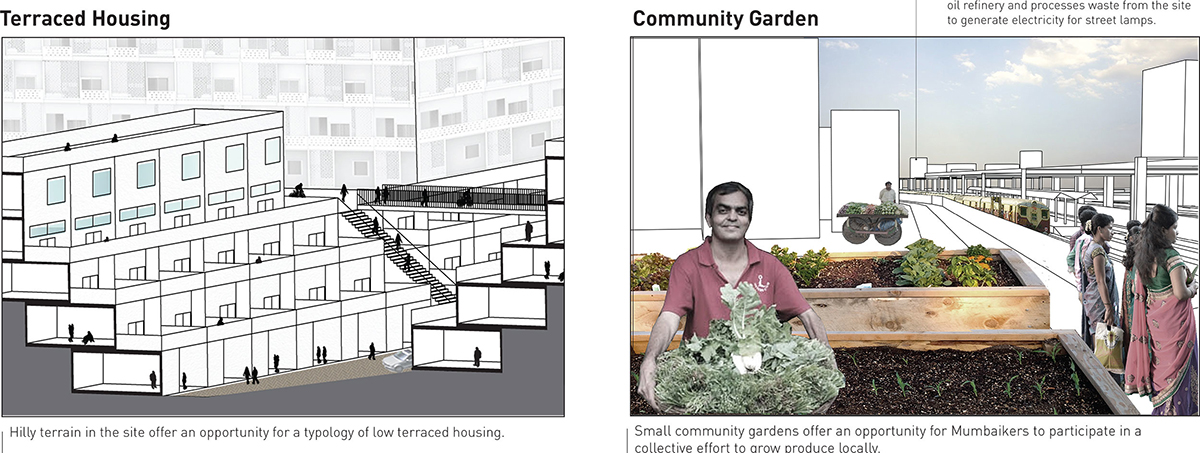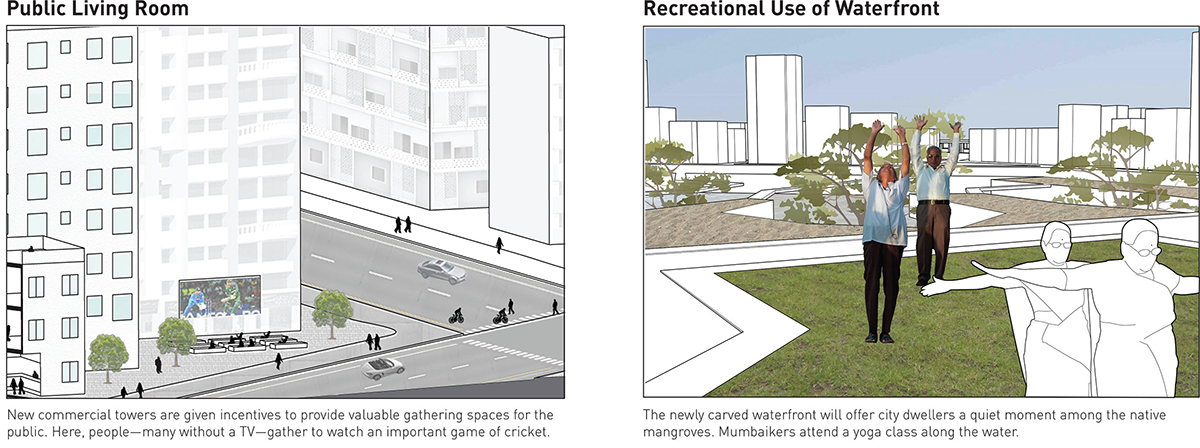Reclaiming the Eastern Waterfront
Mid 2014
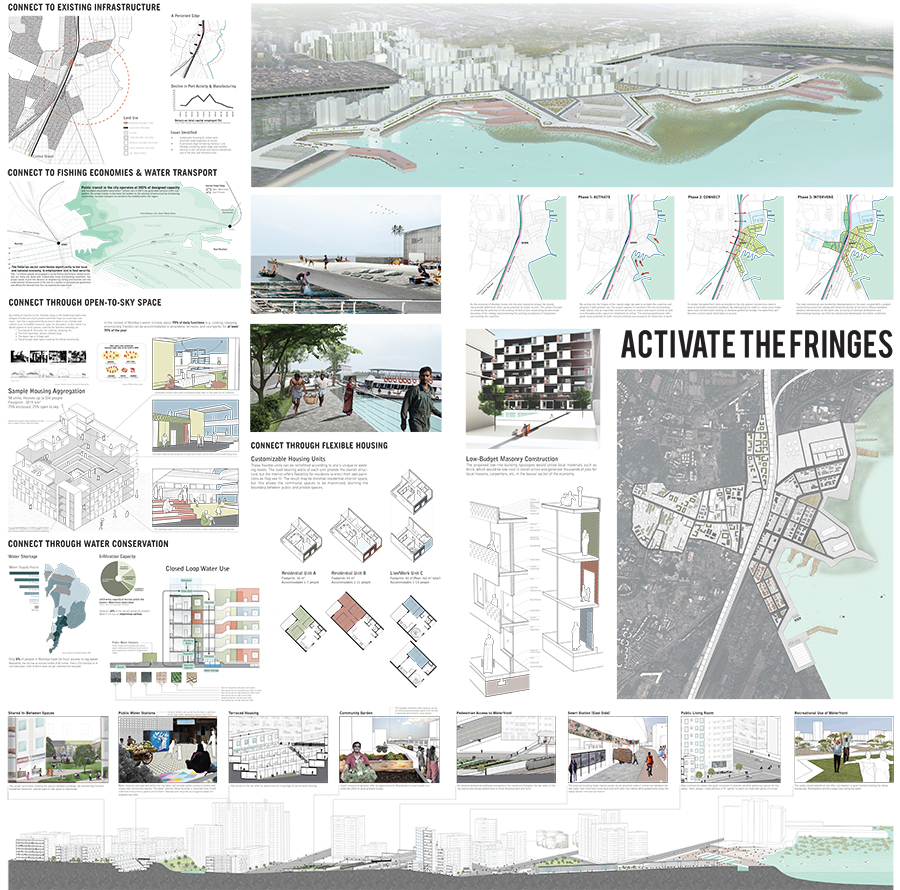
Context
This design proposal was presented at the Vertical Cities Asia Competition 2014, an international design competition held annually in Singapore, as an urban design scheme to house 1000 residents on the Eastern Waterfront in Mumbai, India. After my high-density housing project was selected by the school's Dean and Chair to represent the University of Michigan, I spent the summer adapting it to a larger, urban scale for the competition.
The original project was focused on developing a small site and we designed down to the details of the wall section. Since this competition expected much greater considerations at the urban scale, with the theme of "connectivity," we needed to shift our thinking to accommodate larger scale strategies. We focused on examining the problems of the existing infrastructure and offering solutions that could be phased into the site to accommodate existing programs and introduce new ones. Like with the other project, considerations of the people who currently live there and the activities they engaged in were prioritized.
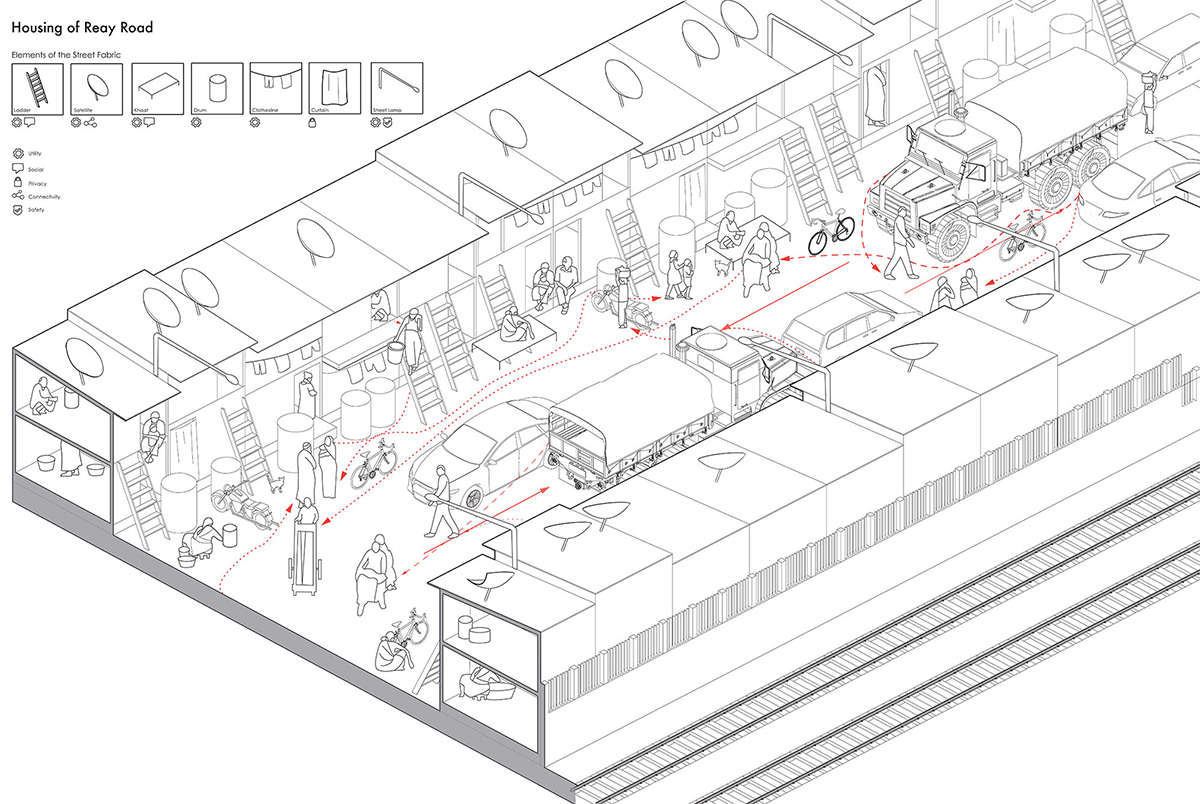
The project kicked off with a two-day workshop at Studio X in Mumbai. Immediately after visiting the site, we worked in groups to each produce an analysis drawing of the site illustrating existing conditions. In this drawing, we were interested in identifying patterns that we observed on the street as we walked through the informal settlements.
Research
We compiled our research materials into a book of curated materials, including photographs, analysis drawings, and diagrams. Below are a few excerpted pages from this book, which also includes our analsis of the typologies on the existing site. Understanding this research was important for devising our own strategy for transforming the region and designing on the site.
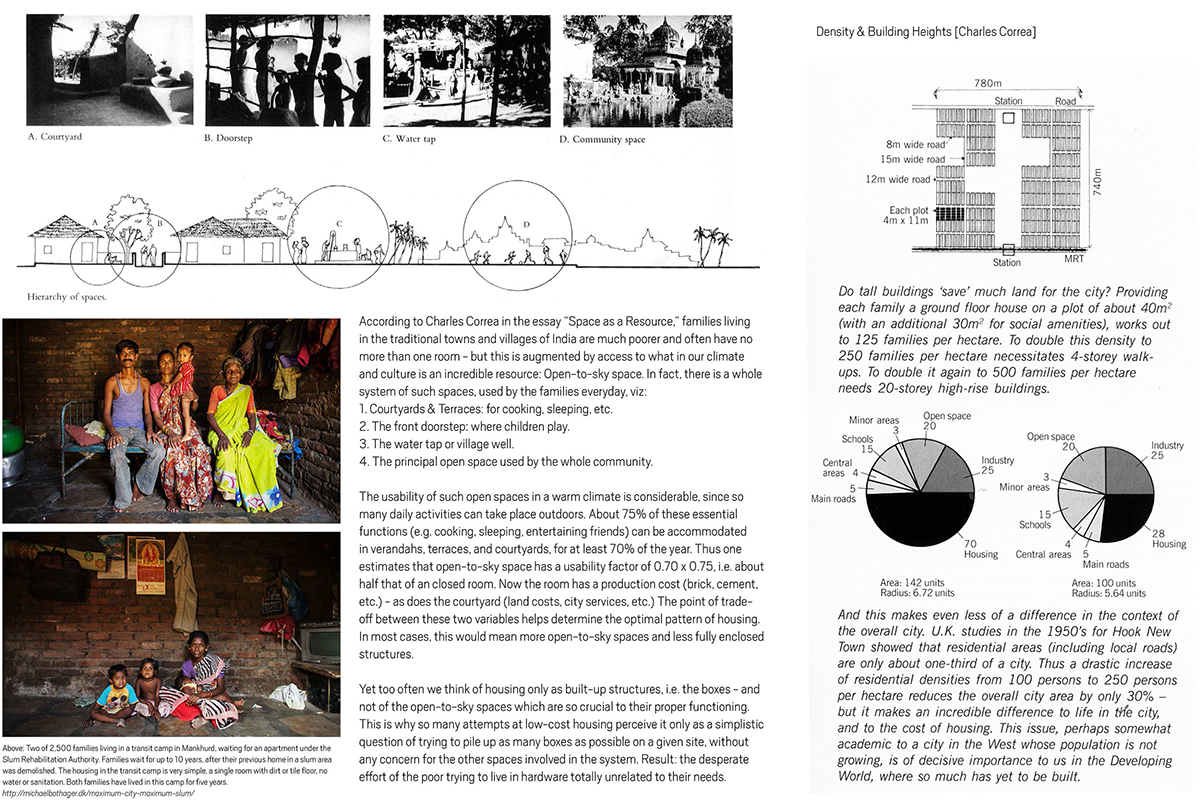

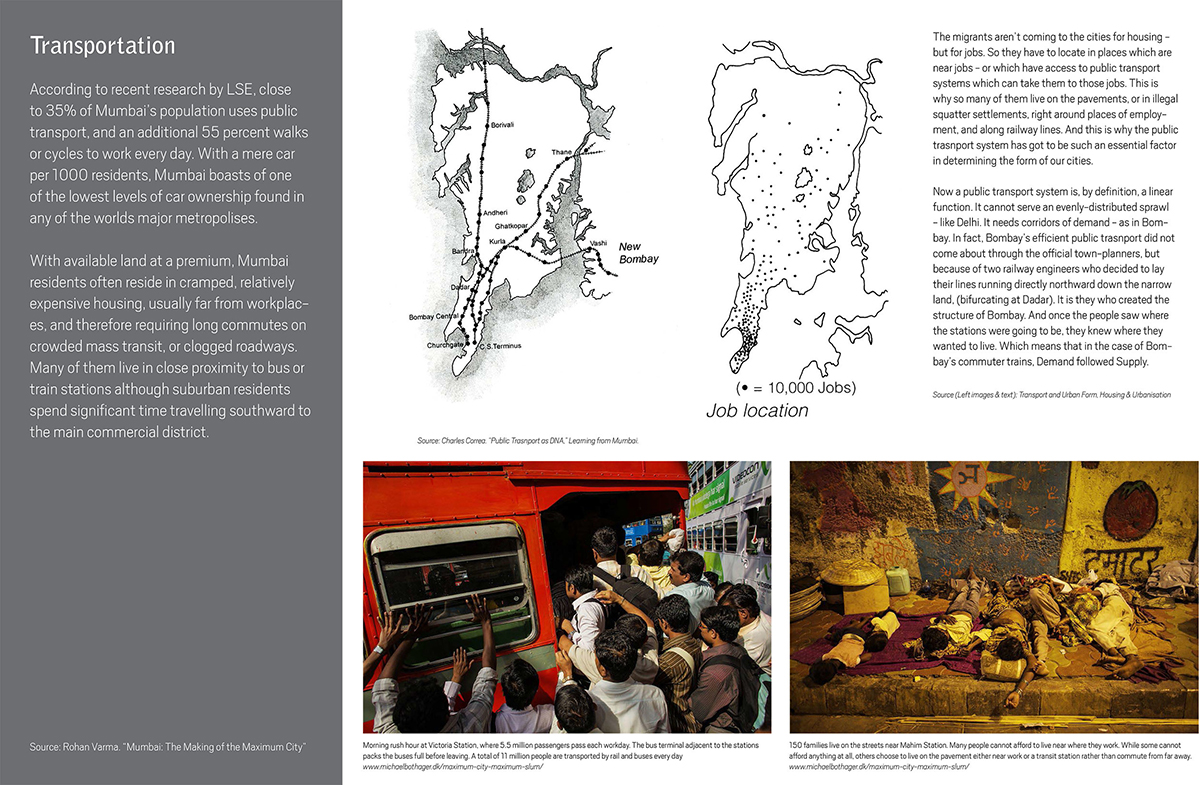


Design Strategy
Based on our research and through presenting our work repeatedly to different experts over the course of the semester, we devised a series of strategies to tackle the enormous site and ambitions of the project. First, in our research, we found that the current railway nearest the waterfront creates a perceived edge that renders the waterfront inaccessible. This, combined with the decline of port activities and manufacturing and thus suboptimal use of the land, has invited the expansion of informal settlements into the area. Thus the first step would involve connecting to the existing infrastructure by developing the region into an accessible and desirable destination for local dwellers.
Connect to Existing Infrastructure

We also felt that the proximity to water and neighboring parts of Mumbai offered an important opportunity, expecially given that public transit in the city operates at 300% of its designed capacity. We introduced a new ferry system that would offer rides into neighboring Navi Mumbai as well as nearby islands. Given the significance of the fisheries section in contributing to both employement and food security, we also wanted to pull the vibrance of neighboring fishing communities into the underutilized infrastructure of the site as a means to stimulate job generation and diffuse the density from the city towards the waterfront.
Connect to Fishing Economies and Water Transport
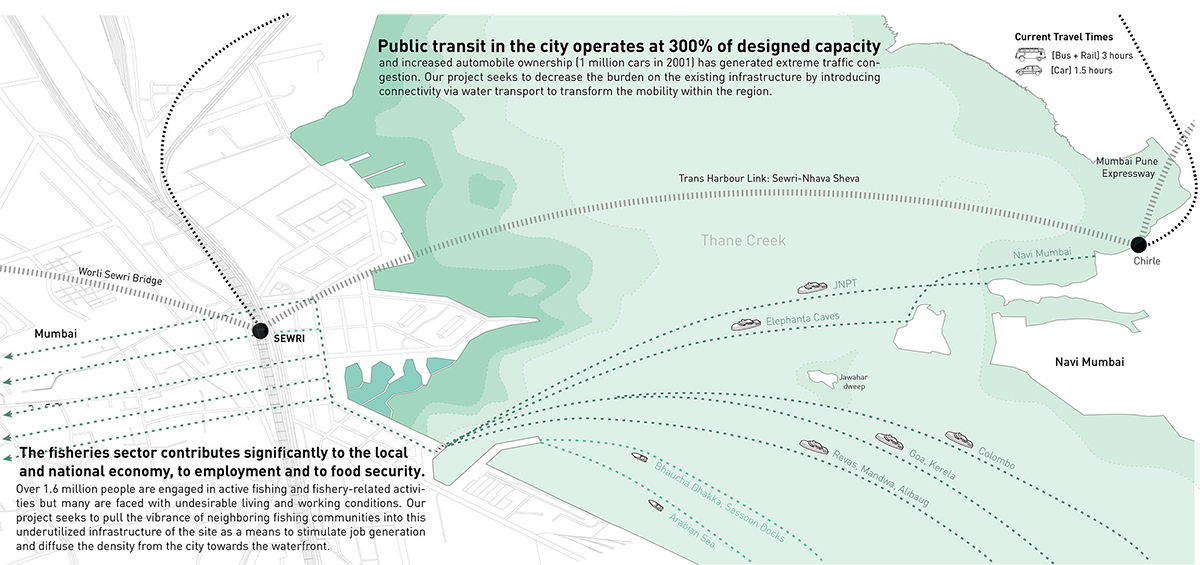
Open-to-sky space offers great value to residents who may not be able to afford much in the way of living space. In the context of Mumbai's warm climate, about 75% of daily functions can be accommodated in verandahs, terraces, and courtyards for at least 70% of the year. We designed our hyper dense housing around the concept of maximizing shared open spaces and minimizing private footprints and thus blurring boundaries between public and private, inside and outside.
Connect through Open-to-Sky Space
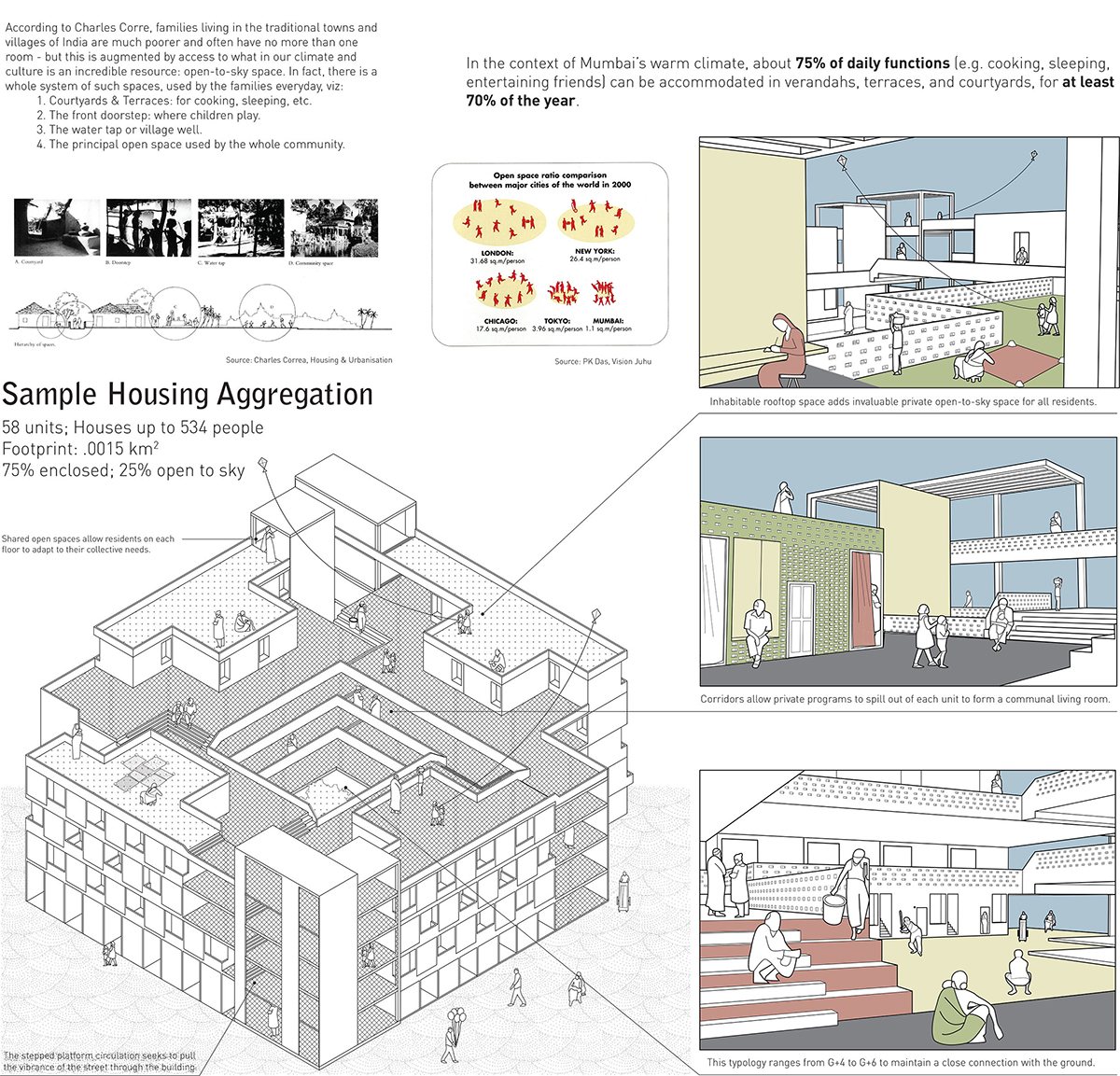
Access to clean water has been an ongoing problem in Mumbai, and there is a severe lack of infrastructure to address this. Currently, only 5% of people in Mumbai have 24-hour access to tap water. We found data around the infiltration capacity of the terrain within the Eastern Waterfront watershed, and designed a closed loop water collecting system that would collect and recycle rainfall throughout the year through the use of porous pavement and green roofs. This runoff could be channeled to sustain the use of small public water stations, which would provide access to plumbing, something that many Mumbaikers still lack access to.
Connect through Water Conservation

Since our proposal is quite ambitious, we designed a phasing strategy for the project to be implemented.

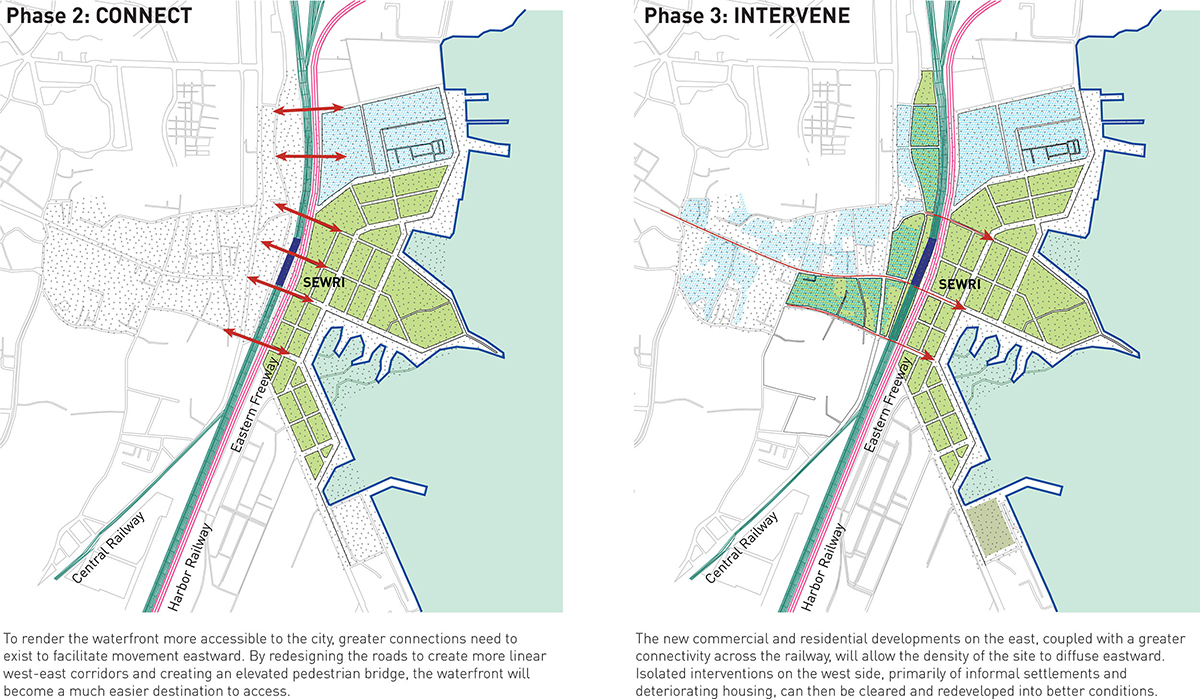
Site Plan

Perspectives


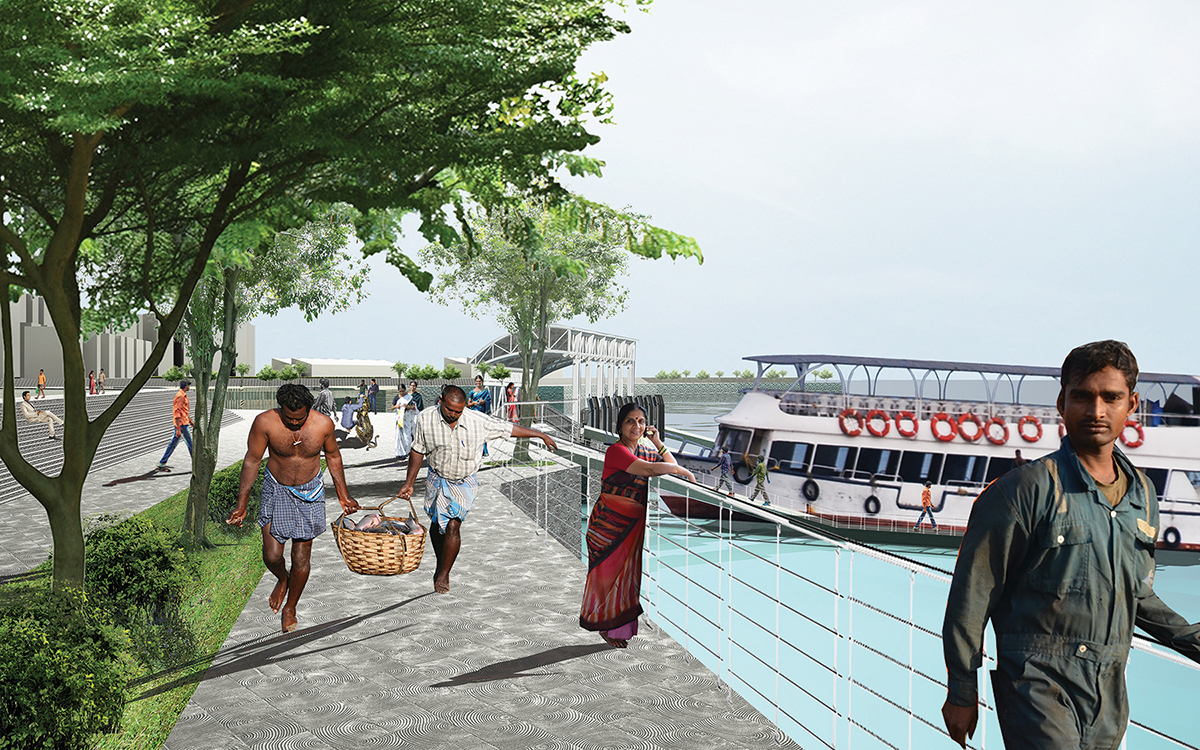
Site Section and Vignettes

